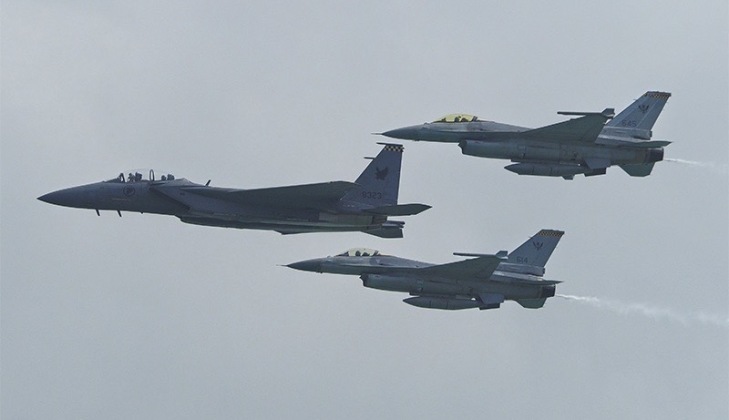The United States Department of Defense has reportedly turned down Thailand’s request to procure advanced fifth-generation F-35 fighter jets, reported Bangkok Post, citing a Royal Thai Air Force source.
However, the US has extended an alternative proposal, offering the Southeast Asian nation the opportunity to purchase F-16 Block 70 and F-15 Eagle fighters, the report said.
According to a source familiar with the matter, US Ambassador Robert F. Gordec conveyed the Pentagon’s message to Royal Thai Air Force Chief ACM Alongkorn Wannarot during a recent visit to the Royal Thai Air Force (RTAF) headquarters at Don Mueang.
The visit by the US ambassador, coupled with the unofficial rejection of Thailand’s bid for F-35 fighter jets, suggests a carefully orchestrated diplomatic engagement between the two nations.
During his meeting with Royal Thai Air Force Chief ACM Alongkorn Wannarot, US Ambassador Robert F. Gordec reportedly stated that the US Department of State held the belief that the Thai air force might not be adequately prepared in terms of infrastructure facilities to accommodate F-35 fighter jets.
Specifically, concerns were raised regarding airbase security, airfield capabilities, maintenance infrastructure, and the availability of trained pilots and other essential personnel.
The ambassador emphasized that achieving readiness for F-35 integration would require substantial time and a significant financial investment.
The report highlighted that the United States has not completely dismissed Thailand’s request to purchase F-35 fighter jets.
Instead, the US has expressed its willingness to reconsider the request once the Royal Thai Air Force (RTAF) attains a certain level of readiness, potentially within the next five to ten years.
In the meantime, the US has made an alternative proposal, offering to sell F-16 Block 70 and F-15 Eagle fighters to Thailand.

The United States is expected to provide an official response to the Royal Thai Air Force’s request to acquire F-35 fighter jets in July.
If the request is officially denied, it would require the US to refund an advance payment of 369.1 million baht (around $10.5 million), which the House of Representatives had approved.
This indicates a strategic approach by the US, considering the current capabilities of the RTAF and proposing aircraft that align with Thailand’s immediate defense requirements.
More Gripens For Thailand?
Thailand presently operates a fleet of JAS-39 Gripen fighter jets manufactured by Saab from Sweden. In addition, the RTAF also maintains several American-made aircraft, including F-16 and F-5 jets, some of which have been in service since the late 1980s.
Given the aging nature of a portion of its F-16 fleet, Thailand intends to replace some of these older aircraft. This move aligns with the RTAF’s objective to modernize its air capabilities and ensure a technologically advanced and effective defense force.
The latest report mentioned that Royal Thai Air Force is exploring acquiring an additional fleet of Gripen fighters from Saab AB, a Swedish aerospace company.
The RTAF had previously purchased a squadron of 12 Gripen fighters stationed at Wing 7 in Surat Thani. Unfortunately, one of the fighters was lost in a crash incident.
Although the report hinted at the potential acquisition of Gripens, it did not provide any specific details about the number that Thailand might procure.
Over the past year, the Royal Thai Air Force has consistently demonstrated a growing interest in procuring a fifth-generation fighter aircraft.
Experts earlier speculated that the United States might hesitate to approve the deal due to Thailand’s increasing military cooperation and ties with Beijing.
Furthermore, amidst a backdrop of economic distress caused by the pandemic, the Royal Thai Air Force’s request for new fighter jets has intensified concerns over the transparency of Thailand’s military procurement process.
The Thai Navy’s notable acquisition of three Chinese-built submarines in 2017 is a prime example of this opacity. Since the 2014 coup, China has emerged as Thailand’s primary source of armaments, solidifying its role as a significant supplier.
Moreover, the Thai military is one of the few that conducts annual joint exercises involving all three People’s Liberation Army branches.
Nonetheless, the official response in July will clarify the future trajectory of Thailand’s defense procurement plans and the potential ramifications for the allocated funds.
- Contact the author at ashishmichel(at)gmail.com
- Follow EurAsian Times on Google News